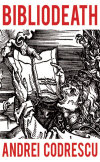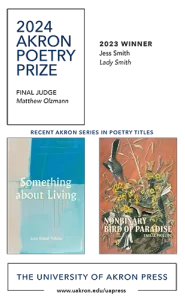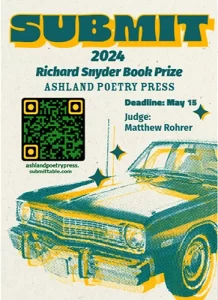Bibliodeath
If you are reading this review, chances are good that books, those things with lots of words crammed between two covers, are probably an integral part of your life. You live with them, thumb through their pages, pass them on to friends, and—if you have enough—make furniture with them (as do I). If this describes you in any way, you will doubtless do yourself a favor by reading Andrei Codrescu’s take on the printed word both past and present, how it lives, where it goes, and the very nature of archives. Bibliodeath is also a portrait of a life lived with books and words. At the end of his tome, Codrescu states: “It is still possible, for as long it took you to read this book, to distinguish the quickly vanishing border between the real and the virtual. This essay is a history of how I got to that border, and how I moved to one or another side of it.” Indeed, Codrescu surveys with depth and humor this very transition we are living through, the digitization of our words.
If you are reading this review, chances are good that books, those things with lots of words crammed between two covers, are probably an integral part of your life. You live with them, thumb through their pages, pass them on to friends, and—if you have enough—make furniture with them (as do I). If this describes you in any way, you will doubtless do yourself a favor by reading Andrei Codrescu’s take on the printed word both past and present, how it lives, where it goes, and the very nature of archives. Bibliodeath is also a portrait of a life lived with books and words. At the end of his tome, Codrescu states: “It is still possible, for as long it took you to read this book, to distinguish the quickly vanishing border between the real and the virtual. This essay is a history of how I got to that border, and how I moved to one or another side of it.” Indeed, Codrescu surveys with depth and humor this very transition we are living through, the digitization of our words.
Over the years, I have read most of Codrescu’s memoir pieces, and this book, to me, seems one of the most intimate—for when you reveal the nature of the relationship you have with books it tells me more about you than all the episodes that ended poorly with spouses, experiments with substance abuse gone amok, or whatever might be on your personal laundry list. Codrescu writes evocatively of his early youth, recalling notebooks lost and found, margin-scribbled books of poetry, books so imbued with the author’s DNA that these items ascend to the status of spiritual, holy-object talismans. It is precisely this type of object that Codrescu contemplates throughout Bibliodeath as the age of physical artifact merges with the arrival of the digital archives. He writes:
In these letters there are no smudges, no odd pauses of the keys, no whiff of tobacco or perfume, no ink blots, no erasures. The pain and pleasure of the writer are invisible. And that is in effect what a good old-fashioned archive preserves: pain, flaws, whiffs of bygone bodies, the evidence of the unseen surround flowing through the writer’s finger(s) unto the paper.
Codrescu delves into this parade of digitization into the archival realm and how it may affect us. “The machine will be holding all of humanity’s memory hostage, and there will be no remembering without praying to the info clouds that will release their data rain in accordance to the accuracy of the prayers addressed to it.” Just what will be stored and who will have access to it? Will the physical artifact become eclipsed and then extinct, like the passenger pigeon and two-cent cigar?
Bibliodeath considers the fetish-nature of the archive librarians who oversee the last of the physical tomes, ranking them as “super-pervs.” Indeed, what nature will the actual sweat-stained manuscripts take on as they become as rarified as a snow leopard sighting? “Paper from the past will be accessible to the uninitiated only via an unbreakable Da Vinci Code.” One of the book’s more visceral anecdotes about personalized manuscript material is the encounter by research librarian J.J. Phillips with a writing document by the late Richard Brautigan. While perusing one of his last manuscripts, she wondered about the brown specks covering the papers. Eventually, she came to the conclusion that these pages were witness to the author’s final act, his suicide. The brown specks were pieces of Brautigan’s brain matter. That final touch would obviously be lost in the digital process.
Codrescu traces a personal and public history of thoughts and how they are stored and how and why we may keep them. His storytelling ability is evident in this book and gives us his unique stamp on this biography of border-crossing writing in the 21st century. One warning though—the “Life in Footnotes” are copious and small, and, if you have old man (or old woman) eyes like me, these additional notes are a bit of a strain. But they are well worth the effort. If you go blind, these last notes will give you much to think about in your world of darkness. But you won’t go blind; rather, you will be enlightened. Read this book and wonder where we have been and where we are going. Both are always important questions, and Bibliodeath is an important attempt to address them.





